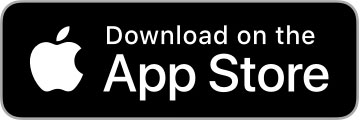With the launch of Apple Watch in April, wearable technology (wearables) has finally begun to hit the mainstream, and Trulia was one of many companies to build an app for the launch. This was not Trulia’s first foray into building software for wearables, it’s actually the fourth wearables platform that we support, and an area that I think has great promise. We’ve also built apps for Google Glass, Android Wear and Samsung Gear. But, we didn’t come to the decision to build for these platforms lightly.
Based on our experience with the growth of mobile, and the possibilities inherent with wearables for what we do – real estate search – Trulia committed itself to building apps for the leading wearable platforms. But I don’t think every software company should follow in our footsteps. You shouldn’t build a wearable app just to build one. Ultimately, the choice depends on how and why people use your product.
The History
Over the last five years, mobile has transformed how people search for real estate. We’ve seen this first-hand at Trulia, after launching the first national real estate app for the iPhone back in 2008, then developing for additional mobile platforms. Traffic hit the tipping point about three years ago when there was a massive shift from Web to mobile visitors. In fact, more than half of our traffic today is occurring on mobile devices.
At the same time, wearables have been making their way into the mainstream, initially as fitness accessories. Our team followed this evolution very closely.
Trulia first became interested in wearables with the announcement of Google Glass a little more than three years ago. From our experience building out Trulia’s mobile software offerings we learned that home search, location and mobility are inextricably linked. Wearables seemed like a natural extension of this benefit for home seekers, so we set off to find out.
From the beginning, we decided this was not a project which we intended to be ROI positive. We knew that the user base would be small, and that any work might be done in vain, however in the spirit of technical innovation we felt determined to learn everything we could, and prepare to apply it in the future.
We learned a lot during those experiments writing apps for Google Glass and subsequent platforms. Simply using the devices every day helped us learn what felt comfortable and right. For example, the screen size is very small on wearables, so you realize that you can’t just take Web, or even mobile experiences, and slap them into that interface. Additionally, wearables are a much more personal device, so location and context are paramount.

Ultimately, we think the Apple Watch is an amazing mechanism for displaying real time, location and context relevant housing data. And, we learned that mobile, location aware services provide a powerful user experience for home seekers because they add value to the core home search experience.

Tips For Building Wearable Apps
If you think your customers would benefit from the same type of light, location aware updates and information, and you’re planning to build apps for the popular wearable platforms, here are some tips I can share based on our own experience at Trulia:
- Relevant, location-based: Make sure the content that you are providing to people is relevant to them, ideally based on their location.
- Familiar experience: Reference the documentation from Apple and Google and follow the established framework for how people interact with the devices so you create a familiar experience.
- Light content: Provide just enough information so that a person can decide if they want to engage further.
- First-hand experience: It’s essential to use the platform to get familiar with its strengths and weaknesses, so you can design the app accordingly.
- Avoid notification overload: Get a sense of how much is too much, when it comes to notifications so you don’t overwhelm people.


